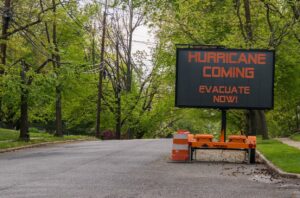Here in the U.S., we have some of the safest drinking water in the world, but unfortunately, not everything that comes out of your tap is safe to ingest. How can you tell if your home has safe drinking water?
The annual Consumer Confidence Report (CCR), or the Annual Drinking Water Quality Report, can help. We recently spoke with Bryanna Poczatek, Technical Affairs Manager for the Water Quality Association (WQA). Bryanna walked us through what the CCR says and how it can help you make decisions about your drinking water.
What is the Consumer Confidence Report?
The CCR is a report that the United States Environmental Protection Agency (EPA) requires public water systems to make available to their consumers each year.
“The report provides important information about the quality of drinking water in the area and can help customers make informed decisions about their water,” says Bryanna, who has been with the WQA for five years.
The CCR includes the following information:
- The water source (groundwater, aquifer, wells, etc.).
- Details from the recent water quality testing for the system.
- Regulated contaminants and their concentrations, if any.
- Comparison of regulated contaminants to EPA drinking water standards.
- The source of any contaminant.
- Any violations of standards, including any potential health impacts.
“When you get your report, the first thing that I would recommend is to see if there are any violations of the drinking water standards,” says Bryanna.
Most reports have a column that reads, “average level detected” (or similarly), which you should compare to the “maximum contaminant level (MCL).” The MCL is the maximum level of a contaminant allowed in the water of a public water system.
“If you compare those two levels, you can see how much is in your water compared to what is allowed in the regulation,” says Bryanna.
You’ll also see the maximum contaminant level goal (MCLG), which is a non-enforceable public health goal.
“This is not a level that the public water systems are required to meet, but it’s essentially the level at which no expected health impacts would occur,” says Bryanna.
For some contaminants, the level is set at zero. You may ask, “How close to the MCLG is my water quality?” Knowing what levels of contaminants are in the water can help consumers determine whether they should take additional actions to improve the quality of their home’s drinking water.
What if all contaminants are below EPA limits?

“That means the water is meeting all federal and state drinking water regulations (MCLs),” says Bryanna.
That doesn’t necessarily mean the water meets that non-enforceable public health goal, the MCLG. The water also could contain unregulated contaminants that public water systems are not required to test or treat.
“In the U.S. we have some of the best drinking water quality in the world,” says Bryanna, “so it’s going to be pretty good quality. But there are steps you can take to improve that water quality even further.”
What is the most dangerous contaminant that could be in your tap water?
Certain populations are more at risk for certain contaminants, so the most dangerous contaminant can be different for different people.
“Children are more susceptible to lead poisoning because they’re absorbing a lot more lead than adults are,” says Bryanna. “Nitrate is another contaminant that is especially dangerous to infants. It can cause blue baby syndrome or low oxygen levels in the blood.”
Some contaminants have acute impacts from which you could experience health effects within a few hours or days. Others can have a chronic impact, and you may not know for months or years.
“Bacteria and viruses can cause issues very suddenly,” says Bryanna, “while exposure to very low levels of certain chemicals like arsenic you might not know for years.”
The danger depends upon the person and the concentration, among other factors.
Warning signs of water quality issues

Cloudy or discolored water, specific orders, or taste issues are easy-to-spot indicators of an issue with your water, but there are many contaminants and other concerns that you would never be able to notice without testing.
To improve water quality, the WQA recommends homeowners take advantage of the following resources:
- EPA’s Safe Drinking Water hotline.
- Water Treatment for Dummies free booklet.
- WQA members who can help test and treatment water quality issues.
- Certified products that can help treat water quality issues.
“If you know what contaminant or what issues you’re dealing with in your water, you can search on our websites for water treatment products that have been tested and verified that they remove contaminants and other concerns from your water,” says Bryanna.
Did you receive your CCR?
Private wells are not regulated by the EPA, so any homeowner with a well will not receive a CCR. However, you are encouraged to get your water tested regularly by a water quality professional.
Renters in apartment buildings, houses, and condos – anyone who does not pay their city water bill directly – may not receive a CCR.
“Renters will likely have to contact either their building manager or a landlord and request a copy of the reports,” says Bryanna. “They can also check to see if it is available online.”
A renter could search for the water provider online or check the EPA’s search tool, which can help locate a local CCR.
What happens if there’s an issue with your water now?
The EPA’s Public Notification Rule requires that public water systems notify all their customers if the safety for the drinking water has been compromised.
“You’re definitely going to know if there’s an issue,” says Bryanna, “but how soon and how you find out is going to change.”
How and when homeowners are notified depends upon the severity of the issue. Homeowners could be notified anywhere from 24 hours to up to a year.
“It could be over TV or news, email, mail,” says Bryanna. “If it’s one of those more long-term issues, such as a late water sample test, you might not know anything until you get next year’s Consumer Confidence Report.”
Updates to the EPA CCR
The EPA is in the process of revising the Consumer Confidence Report requirements and is seeking to finalize the new requirements in early 2024. The new report should be easier to read and understand, so consumers can know what steps to take to make sure their drinking water is safe.
“The Consumer Confidence Report you receive in the future could look different than it does now,” says Bryanna. “Hopefully it changes for the better and will help everyone better understand their water quality.”
Enjoy a new way to manage your home
Homeownership can be hard, but it doesn’t have to be. The vipHome.app can help. In less than four minutes, enjoy a new way to manage your home. Simply download the app, register your home, and enjoy a simplified homeownership experience.
Download the app today!





